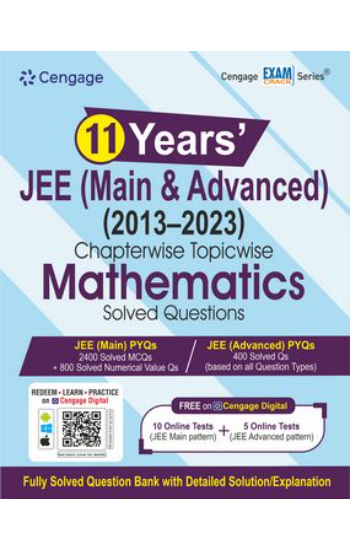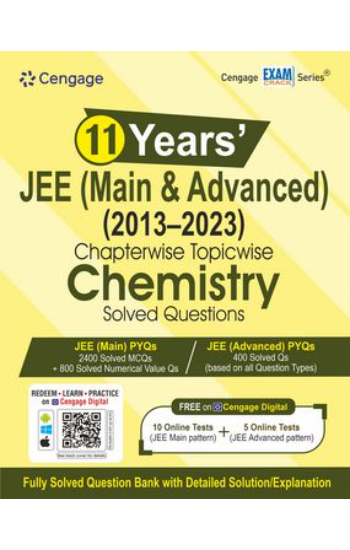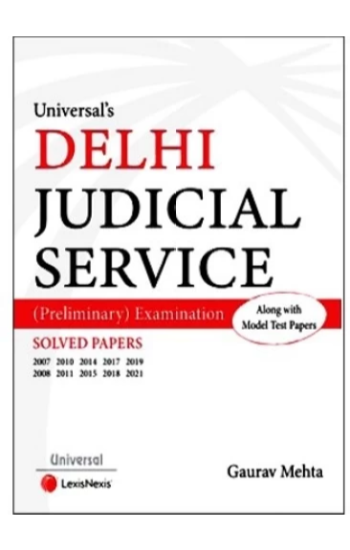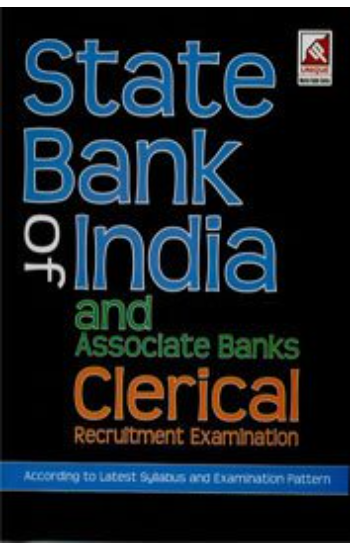
Save: 30%

Save: 10%
Indian Economy – Misra Puri – 41st/Ed. (including Union Budget 2023-24)
Publisher:
| Author:
| Language:
| Format:
₹850 ₹765
Save: 10%
Out of stock
Receive in-stock notifications for this.
Ships within:
Out of stock
ISBN:
Page Extent:
According to the data released by the NSO for the Financial Year 2021-22 on 31st May, 2022, the real GDP grew at the rate of 8.7 per cent. Thus, the growth rate of real GDP for India was higher than most of the other big economies. This is a clear indication that the Indian Economy is now on the path to recovery. But, challenges still remain in its way. The retail inflation is almost 8 per cent. The number of poor people is very high, the unemployment rate is at an alarming level, and a big part of the population is still grappling with malnutrition and undernutrition. According to the ‘Report on Currency and Finance’ published by the Reserve Bank of India on 28th April 2022, it will take another 10 years or more for the Indian Economy to recover fully from the adverse effects of COVID-19. All these issues have been adequately discussed in this 40th revised and updated edition of the book.
The organisation, structure and contents of the present edition are as follows:
Part I of the book ‘Economic Development: A Theoretical Background’ is divided into three chapters. It discusses the concepts of economic growth and development, common characteristics of underdeveloped countries, the role of economic and non-economic factors in economic development, the concept of human development, human development index, gender inequality index, multidimensional poverty index, etc., and issues concerning the relationship between environment and development.
Part II discusses the ‘Structure of the Indian Economy’ and consists of thirteen chapters. It is devoted to the discussion of various issues relating to the nature of the Indian economy including the natural resources and ecological issues, infrastructural development, population problem, unemployment and poverty (including a discussion on universal basic income), income growth and inequalities, etc.
Part III of the book ‘Basic Issues in Agriculture’ consists of nine chapters. It starts with a discussion of the role, nature and cropping pattern of Indian agriculture and then takes up for discussion the issues in Indian agricultural policy (including a review of the new global opportunities and challenges facing Indian agriculture in the wake of the various agreements concluded under WTO). We then proceed to a discussion of agricultural production and productivity trends, progress and failures in the field of land reform, green revolution and its impact on the rural economy of the country, agricultural finance and marketing, agricultural prices and agricultural price policy, the food security system in India, and agricultural labour.
Part IV on ‘The Industrial Sector and Services in Indian Economy’ consists of ten chapters. It starts with a discussion of industrial development during the period of planning and then proceeds to discuss some major industries of India. This is followed by a discussion of small-scale industries, industrial policy, role and performance of public sector enterprises, the issue of privatisation in public sector enterprises, role of private sector in the Indian economy, CSR (corporate social responsibility), the problem of industrial sickness, and various issues relating to industrial labour. The last chapter in this part (Chapter 35) discusses the growth of the services sector and related issues.
Part V of the book concerns ‘Foreign Trade and Foreign Capital.’ Consisting of eight chapters, it starts with a discussion of the changes in the composition and direction of India’s foreign trade, and then proceeds to a discussion of India’s balance of payments, trade policy, policy relating to foreign capital, exchange rate and capital account convertibility, MNCs (including a discussion on FERA and FEMA), etc. The last two chapters of this part discuss in detail the opportunities and challenges that the Indian economy faces in the new global environment and also examines critically the working of the WTO.
Part VI on ‘Money and Banking’ consists of six chapters. It starts with a discussion of the problem of inflation in India and then takes up the discussion of Indian money market, expansion and progress of commercial banking in India, Reserve Bank of India and a critical appraisal of its monetary policy, development of capital market in India and steps taken to strengthen this market in recent years (including steps taken by SEBI) and institutional financing.
Part VII on ‘Public Finance’ contains five chapters. In this part, we start with a discussion of the Indian tax structure (including a discussion on GST). This is followed by a discussion of public expenditure and public debt in India. The chapter on “India’s Fiscal Policy” in addition to discussing the various aspects of fiscal policy as is being implemented in India, examines the issue of fiscal responsibility in detail. The last chapter of this part focuses on the issues related to federal finance in India. It also discusses the report of the Fifteenth Finance omission in detail which was submitted in two parts – Part I covering only one year 2020-21 and Part II covering the five-year period 2021-22.
Part VIII which is the last part of the book is on ‘Economic Planning and Policy.’ It contains ten chapters. Starting from a discussion of the rationale, features and objectives of planning, we proceed to discuss the strategy of development as envisaged in the various five year plans. This is followed by a discussion of the financing pattern of India’s five year plans, sectoral allocation of resources, regional planning in India, the problem of black money (including a discussion on demonetisation), assessment of planning in India (including a detailed discussion of the post-economic reform period) and Twelfth Five year plan. The last chapter (Chapter 64), which is a new chapter, discusses the impact of Corona pandemic on the Indian Economy.
Contents –
PART I – ECONOMIC DEVELOPMENT: A THEORETICAL BACKGROUND
1. Economic Growth, Development and Underdevelopment
2. Economic and Human Development
3. The Environment and Development
PART II – STRUCTURE OF THE INDIAN ECONOMY
4. Colonialism and Underdevelopment of the Indian Economy
5. Nature of the Indian Economy
6. Natural Resources
7. Infrastructure
8. The Population Growth and Economic Development
9. Some Demographic Issues
10. Human Resource Development: Education and Health
11. Labour Force Growth and Occupational Pattern
12. Employment and Unemployment in India
13. Capital Formation in India
14. National Income of India: Macroeconomic Overview
15. Poverty in India
16. Income Inequalities in India
PART III – BASIC ISSUES IN AGRICULTURE
17. Indian Agriculture: Role, Nature and Cropping Pattern
18. Issues in Indian Agricultural Policy and Rural Development
19. Agricultural Production and Productivity Trends
20. Land Reforms
21. Agricultural Inputs and Green Revolution
22. Agricultural Finance and Marketing
23. Agricultural Prices and Agricultural Price Policy
24. Agricultural Subsidies and Food Security in India
25. Agricultural Labour
PART IV – THE INDUSTRIAL SECTOR AND SERVICES IN INDIAN ECONOMY
26. Industrial Development During the Planning Period
27. Some Major Industries of India
28. Small-Scale and Cottage Industries
29. Industrial Policy
30. Public Sector in the Indian Economy
31. Privatisation of Public Sector Enterprises: The Disinvestment Programme in India
32. Some Issues Related to Private Sector
33. Industrial Sickness in India
34. Labour Relations and Social Security
35. Services Sector in Indian Economy
PART V – FOREIGN TRADE AND FOREIGN CAPITAL
36. India’s Foreign Trade: Value, Composition and Direction
37. India’s Balance of Payments
38. Trade Policy of the Government of India
39. Foreign Capital and Aid
40. India’s Exchange Rate Policy, Foreign Exchange Reserves and Capital Account Convertibility
41. Multinational Corporations, FERA and FEMA
42. Globalisation and its Impact on the Indian Economy
43. WTO and India
PART VI – MONEY, BANKING AND FINANCE
44. Price Trends and Inflation
45. Indian Money Market
46. Commercial Banking in India
47. The Reserve Bank of India
48. Capital Market in India
49. Institutional Financing
PART VII – PUBLIC FINANCE
50. The Indian Tax Structure
51. Public Expenditure in India: Trends and Issues
52. Public Debt in India
53. India’s Fiscal Policy
54. Federal Finance in India — Centre-State Financial Relations
PART VIII – ECONOMIC PLANNING AND POLICY
55. Economic Planning — Rationale, Features and Objectives
56. The Strategy of Planning
57. Resource Allocation — Investment Pattern in Indian Plans
58. Financing of Five Year Plans
59. Regional Planning in India
60. Black Economy in India
61. Assessment of Indian Planning
62. Economic Reforms and Liberalisation
63. Twelfth Five Year Plan
64. Covid and Indian Economy
According to the data released by the NSO for the Financial Year 2021-22 on 31st May, 2022, the real GDP grew at the rate of 8.7 per cent. Thus, the growth rate of real GDP for India was higher than most of the other big economies. This is a clear indication that the Indian Economy is now on the path to recovery. But, challenges still remain in its way. The retail inflation is almost 8 per cent. The number of poor people is very high, the unemployment rate is at an alarming level, and a big part of the population is still grappling with malnutrition and undernutrition. According to the ‘Report on Currency and Finance’ published by the Reserve Bank of India on 28th April 2022, it will take another 10 years or more for the Indian Economy to recover fully from the adverse effects of COVID-19. All these issues have been adequately discussed in this 40th revised and updated edition of the book.
The organisation, structure and contents of the present edition are as follows:
Part I of the book ‘Economic Development: A Theoretical Background’ is divided into three chapters. It discusses the concepts of economic growth and development, common characteristics of underdeveloped countries, the role of economic and non-economic factors in economic development, the concept of human development, human development index, gender inequality index, multidimensional poverty index, etc., and issues concerning the relationship between environment and development.
Part II discusses the ‘Structure of the Indian Economy’ and consists of thirteen chapters. It is devoted to the discussion of various issues relating to the nature of the Indian economy including the natural resources and ecological issues, infrastructural development, population problem, unemployment and poverty (including a discussion on universal basic income), income growth and inequalities, etc.
Part III of the book ‘Basic Issues in Agriculture’ consists of nine chapters. It starts with a discussion of the role, nature and cropping pattern of Indian agriculture and then takes up for discussion the issues in Indian agricultural policy (including a review of the new global opportunities and challenges facing Indian agriculture in the wake of the various agreements concluded under WTO). We then proceed to a discussion of agricultural production and productivity trends, progress and failures in the field of land reform, green revolution and its impact on the rural economy of the country, agricultural finance and marketing, agricultural prices and agricultural price policy, the food security system in India, and agricultural labour.
Part IV on ‘The Industrial Sector and Services in Indian Economy’ consists of ten chapters. It starts with a discussion of industrial development during the period of planning and then proceeds to discuss some major industries of India. This is followed by a discussion of small-scale industries, industrial policy, role and performance of public sector enterprises, the issue of privatisation in public sector enterprises, role of private sector in the Indian economy, CSR (corporate social responsibility), the problem of industrial sickness, and various issues relating to industrial labour. The last chapter in this part (Chapter 35) discusses the growth of the services sector and related issues.
Part V of the book concerns ‘Foreign Trade and Foreign Capital.’ Consisting of eight chapters, it starts with a discussion of the changes in the composition and direction of India’s foreign trade, and then proceeds to a discussion of India’s balance of payments, trade policy, policy relating to foreign capital, exchange rate and capital account convertibility, MNCs (including a discussion on FERA and FEMA), etc. The last two chapters of this part discuss in detail the opportunities and challenges that the Indian economy faces in the new global environment and also examines critically the working of the WTO.
Part VI on ‘Money and Banking’ consists of six chapters. It starts with a discussion of the problem of inflation in India and then takes up the discussion of Indian money market, expansion and progress of commercial banking in India, Reserve Bank of India and a critical appraisal of its monetary policy, development of capital market in India and steps taken to strengthen this market in recent years (including steps taken by SEBI) and institutional financing.
Part VII on ‘Public Finance’ contains five chapters. In this part, we start with a discussion of the Indian tax structure (including a discussion on GST). This is followed by a discussion of public expenditure and public debt in India. The chapter on “India’s Fiscal Policy” in addition to discussing the various aspects of fiscal policy as is being implemented in India, examines the issue of fiscal responsibility in detail. The last chapter of this part focuses on the issues related to federal finance in India. It also discusses the report of the Fifteenth Finance omission in detail which was submitted in two parts – Part I covering only one year 2020-21 and Part II covering the five-year period 2021-22.
Part VIII which is the last part of the book is on ‘Economic Planning and Policy.’ It contains ten chapters. Starting from a discussion of the rationale, features and objectives of planning, we proceed to discuss the strategy of development as envisaged in the various five year plans. This is followed by a discussion of the financing pattern of India’s five year plans, sectoral allocation of resources, regional planning in India, the problem of black money (including a discussion on demonetisation), assessment of planning in India (including a detailed discussion of the post-economic reform period) and Twelfth Five year plan. The last chapter (Chapter 64), which is a new chapter, discusses the impact of Corona pandemic on the Indian Economy.
Contents –
PART I – ECONOMIC DEVELOPMENT: A THEORETICAL BACKGROUND
1. Economic Growth, Development and Underdevelopment
2. Economic and Human Development
3. The Environment and Development
PART II – STRUCTURE OF THE INDIAN ECONOMY
4. Colonialism and Underdevelopment of the Indian Economy
5. Nature of the Indian Economy
6. Natural Resources
7. Infrastructure
8. The Population Growth and Economic Development
9. Some Demographic Issues
10. Human Resource Development: Education and Health
11. Labour Force Growth and Occupational Pattern
12. Employment and Unemployment in India
13. Capital Formation in India
14. National Income of India: Macroeconomic Overview
15. Poverty in India
16. Income Inequalities in India
PART III – BASIC ISSUES IN AGRICULTURE
17. Indian Agriculture: Role, Nature and Cropping Pattern
18. Issues in Indian Agricultural Policy and Rural Development
19. Agricultural Production and Productivity Trends
20. Land Reforms
21. Agricultural Inputs and Green Revolution
22. Agricultural Finance and Marketing
23. Agricultural Prices and Agricultural Price Policy
24. Agricultural Subsidies and Food Security in India
25. Agricultural Labour
PART IV – THE INDUSTRIAL SECTOR AND SERVICES IN INDIAN ECONOMY
26. Industrial Development During the Planning Period
27. Some Major Industries of India
28. Small-Scale and Cottage Industries
29. Industrial Policy
30. Public Sector in the Indian Economy
31. Privatisation of Public Sector Enterprises: The Disinvestment Programme in India
32. Some Issues Related to Private Sector
33. Industrial Sickness in India
34. Labour Relations and Social Security
35. Services Sector in Indian Economy
PART V – FOREIGN TRADE AND FOREIGN CAPITAL
36. India’s Foreign Trade: Value, Composition and Direction
37. India’s Balance of Payments
38. Trade Policy of the Government of India
39. Foreign Capital and Aid
40. India’s Exchange Rate Policy, Foreign Exchange Reserves and Capital Account Convertibility
41. Multinational Corporations, FERA and FEMA
42. Globalisation and its Impact on the Indian Economy
43. WTO and India
PART VI – MONEY, BANKING AND FINANCE
44. Price Trends and Inflation
45. Indian Money Market
46. Commercial Banking in India
47. The Reserve Bank of India
48. Capital Market in India
49. Institutional Financing
PART VII – PUBLIC FINANCE
50. The Indian Tax Structure
51. Public Expenditure in India: Trends and Issues
52. Public Debt in India
53. India’s Fiscal Policy
54. Federal Finance in India — Centre-State Financial Relations
PART VIII – ECONOMIC PLANNING AND POLICY
55. Economic Planning — Rationale, Features and Objectives
56. The Strategy of Planning
57. Resource Allocation — Investment Pattern in Indian Plans
58. Financing of Five Year Plans
59. Regional Planning in India
60. Black Economy in India
61. Assessment of Indian Planning
62. Economic Reforms and Liberalisation
63. Twelfth Five Year Plan
64. Covid and Indian Economy
About Author
V.K. Puri is a Reader in Economics in Shyam Lal College, Delhi University and has a teaching experience of almost three decades.
They have co-authored some very popular and widely acclaimed textbooks. These include Indian Economy (currently running in sixteenth edition), Bharatiya Arthavyavastha (the Hindi version of the above book currently running in tenth edition), Economics of Development and Planning (currently running in seventh edition). Microeconomics: Theory and Applications Part I and II (currently running in second edition). Modern Microeconomics and Modern Macroeconomic Theory.
Bharat Garg -
Shyam Lal College,
University of Delhi,
Delhi.
Reviews
Clear filtersThere are no reviews yet.
YOU MAY ALSO LIKE…
DO WELL PHYSICS FOR JEE (MAIN): CLASS 11,1ST EDITION
Save: 30%
DO WELL PHYSICS FOR JEE (MAIN): CLASS 12 ,1ST EDITION
Save: 30%
JEE MAIN QUESTIONKOSH CHEMISTRY, 1ST EDITION
Save: 30%
JEE OBJECTIVE CHEMISTRY: PART 1 (BOOK BOOKLET)
Save: 30%
JEE OBJECTIVE CHEMISTRY: PART 2 (BOOK BOOKLET)
Save: 30%
JEE OBJECTIVE MATHEMATICS: PART 1 (BOOK BOOKLET)
Save: 30%
JEE OBJECTIVE PHYSICS: PART 1 (BOOK BOOKLET)
Save: 30%
JEE OBJECTIVE PHYSICS: PART 2 (BOOK BOOKLET)
Save: 30%
LAW RELATING TO INTELLECTUAL PROPERTY RIGHTS
Save: 20%
Objective Arithmetic Ssc And Railway Exam Special
Save: 40%
STATE BANK OF INDIA CLERICAL RECRUITMENT EXAMINATION
Save: 20%




















Reviews
Clear filtersThere are no reviews yet.